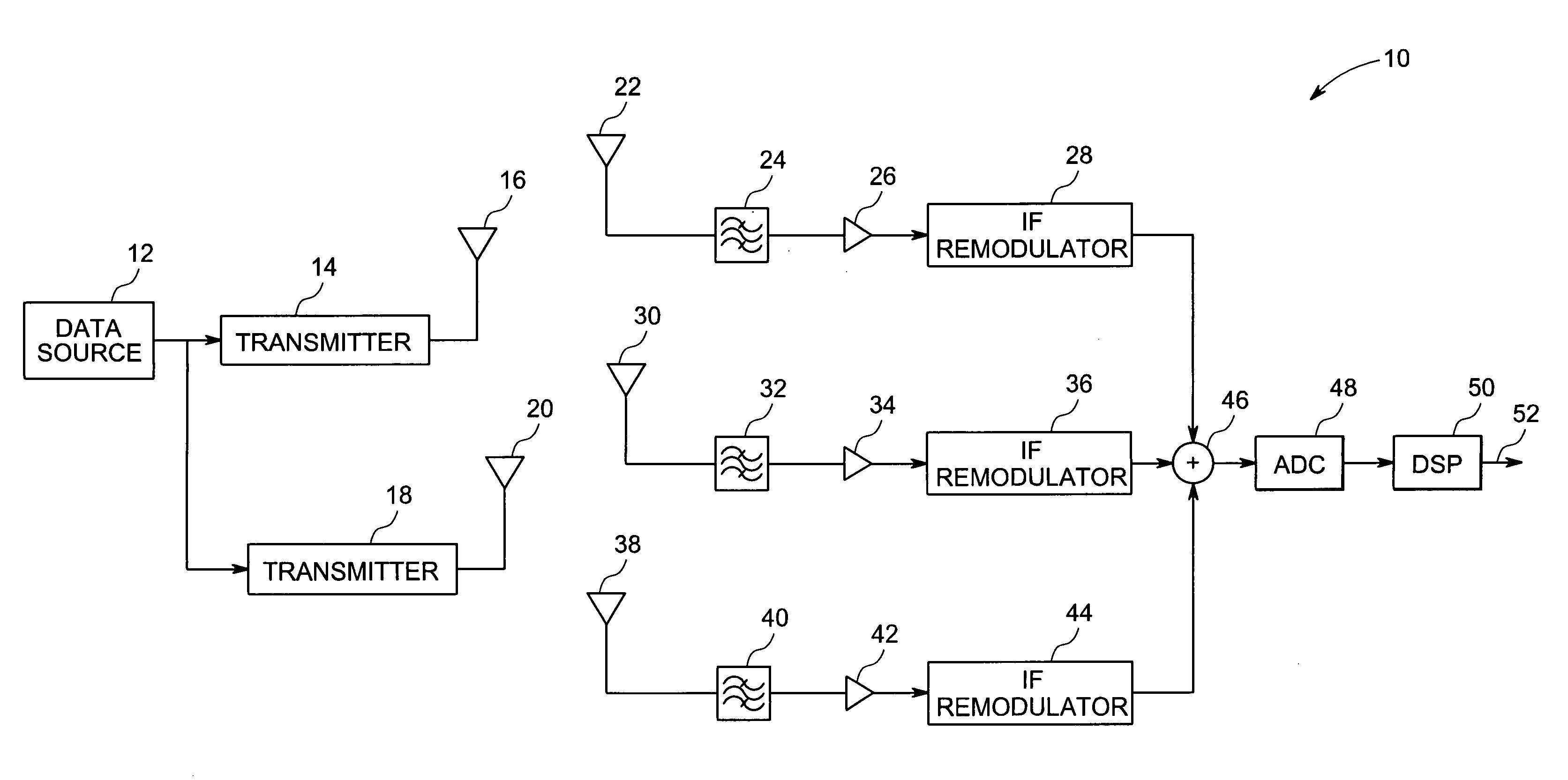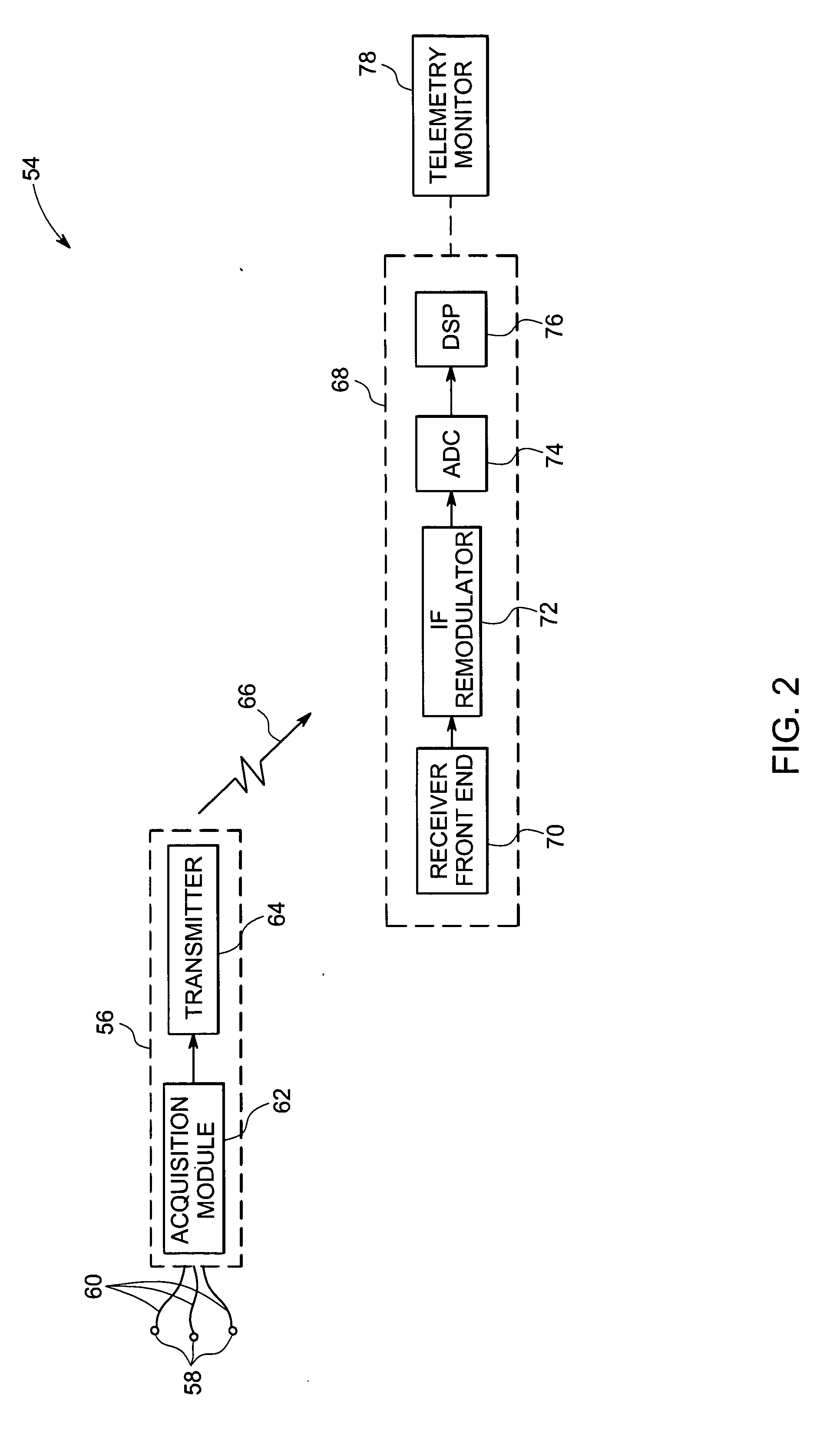System and method of communicating signals
a communication system and signal technology, applied in the field of wireless communication, can solve the problems of limiting system performance, system performance may experience degradation, and temporary increases in the ber of demodulated information
- Summary
- Abstract
- Description
- Claims
- Application Information
AI Technical Summary
Benefits of technology
Problems solved by technology
Method used
Image
Examples
Embodiment Construction
[0027] Wireless communication systems are being increasingly employed in various fields. Further, wireless communication systems suffer from degradation of system performance as they often operate in environments with severe fading due to multi-path propagation. Multiple-antenna systems have been used to mitigate the problem of fading. In addition, spatial diversity schemes have been employed to enhance performance of wireless communication systems. However, the wireless communication systems using spatial diversity suffer from degradation of performance due to increased switching time between antennas, loss of data during antenna switching and higher BER. It may therefore be desirable to develop a robust technique that advantageously facilitates enhanced performance of the wireless communication systems. The techniques discussed herein address some or all of these issues.
[0028] Referring to FIG. 1, an exemplary wireless communication system 10, in accordance with aspects of the pr...
PUM
 Login to View More
Login to View More Abstract
Description
Claims
Application Information
 Login to View More
Login to View More - R&D
- Intellectual Property
- Life Sciences
- Materials
- Tech Scout
- Unparalleled Data Quality
- Higher Quality Content
- 60% Fewer Hallucinations
Browse by: Latest US Patents, China's latest patents, Technical Efficacy Thesaurus, Application Domain, Technology Topic, Popular Technical Reports.
© 2025 PatSnap. All rights reserved.Legal|Privacy policy|Modern Slavery Act Transparency Statement|Sitemap|About US| Contact US: help@patsnap.com



